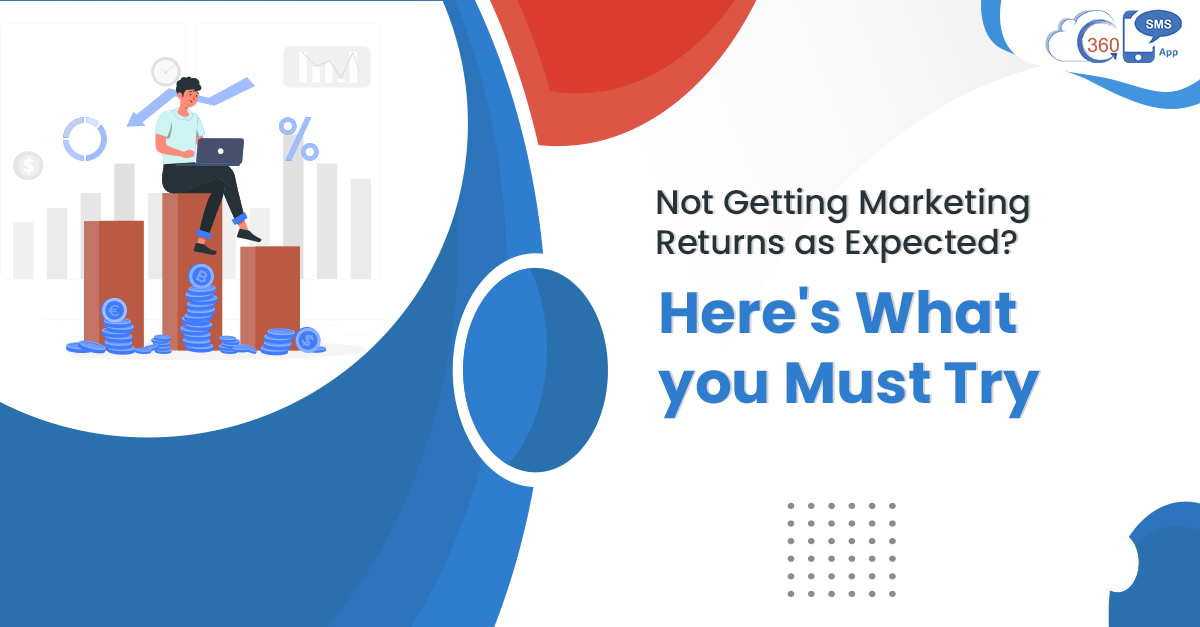Not Getting Marketing Returns as Expected? Here’s What you Must Try
Organizations and their marketing teams make several hardcore efforts to increase marketing returns and revenue. But many times, the marketing team fails to bring the desired results. One of the biggest reasons for the low marketing returns is running marketing campaigns without segmenting your list of audiences. Every prospect or customer is different and has unique choices, tastes, geographical location, issues, etc., which need to be considered for laser-focused targeted campaigns. There are several ways to segments customers and create lists for targeted marketing and better returns.
Various Ways to Segment Customers for Targeted Marketing
Segment Customers Based on Responses
One-on-one conversations with clients provide enough rooms to collect valuable data. Thus, if agents are getting into one-on-one interaction with customers to resolve their inquiries or for any other purpose, they can collect various details and segment customers later on.
Another way to segment customers is to filter responses.
This could be the easiest way to segment interested and not interested customers and send the next relevant text. Employees can use keyword filters for bulk texting and speed up the customer segmentation process for sending replies faster as they can segment customers based on responses.
Configure Dynamic Conversation Trees for Targeted Marketing
In the digital era, where everything is at the customer’s fingertips, capturing details at scale is not a tough nut to crack for companies. All they need is a reliable tool in place to interact with people at scale. And when it comes to a scalable communication tool, nothing can beat Salesforce text messages.
So, organizations can run dynamic Surveys and Questionnaires through text messages for detailed data capturing. With dynamic conversation trees, firms can tweak Surveys based on customer responses and trigger Surveys from any specific question if required.
Further, by analyzing the data, they can segment customers and create lists based on various parameters. These parameters can include tastes, preferences, gender, age, location, issues, and many more. Using these lists, they can create personalized campaigns and tap into more targeted marketing.
Play with URLs to Gauge Customer Intent
URLs can also play a vital role in gauging audience intent. So, you can also use URLs and measure clickthrough for each URL to gauge the potential customer’s intent. Further, based on the clickthrough of a URL, you can create a list of customers who have clicked on a URL and who haven’t.
Later on, you can use these lists for follow-ups or any other action. For example, you can send shortened payment URLs and track click-through to follow up with customers who haven’t clicked the URL.
Get a Competitive Edge and Use Marketing Budgets Prudently with Customer Segmentation
Every business venture aims for customer satisfaction. Thus, proper segmentation of customers helps you to manifest a better understanding of customer needs and preferences. More importantly, you can make prudent use of marketing budgets, allocate marketing resources more accurately, maximize returns, and get a competitive edge.
Running campaigns or marketing without segmenting customers is like shots in the dark that hardly brings the desired result. But to get results as envisaged, organizations cannot depend on wild guesses. Also, one type of campaign cannot work for all as every individual is different. This urges customer segmentation for personalized interactions and targeted marketing.
To know more about how you can increase returns with texting, get in touch with our experts at sales@360smsapp.com or contact us here.







